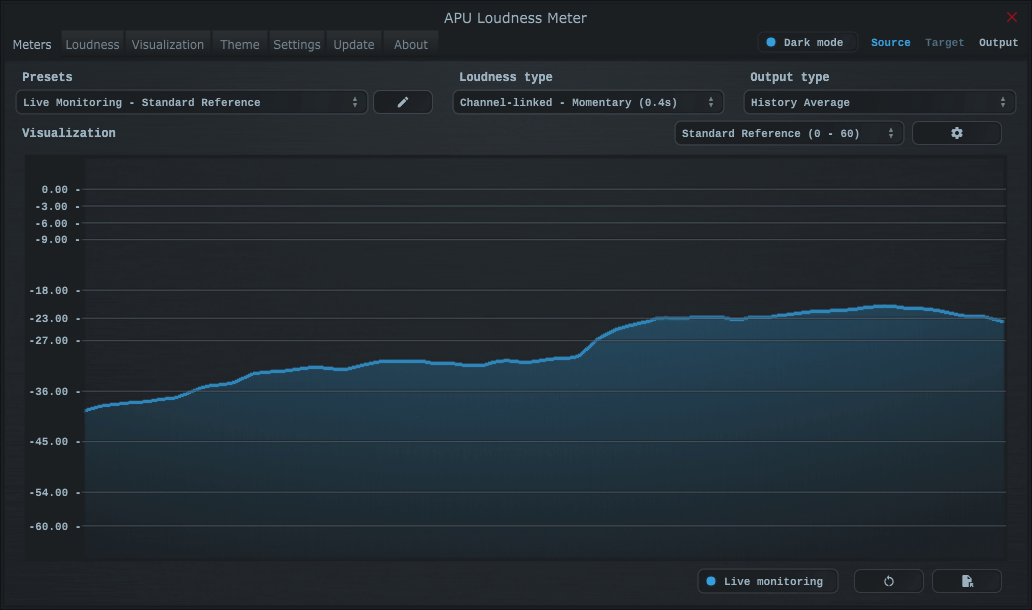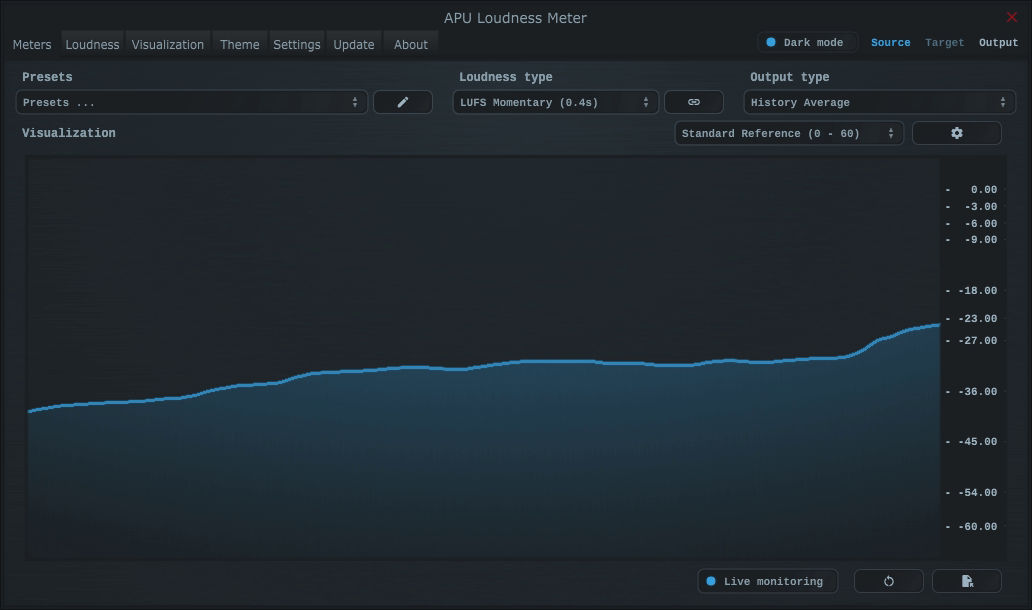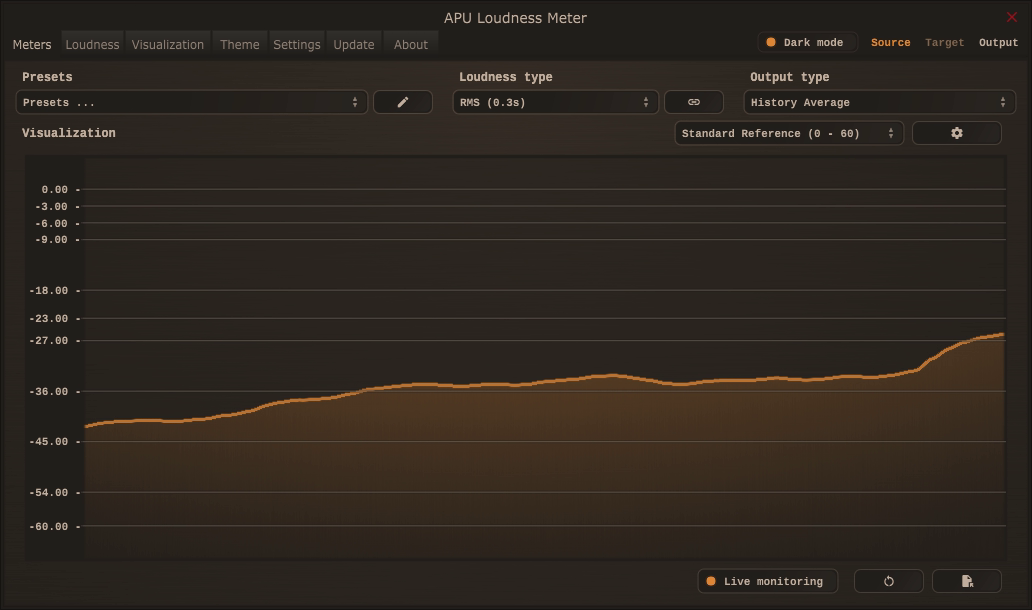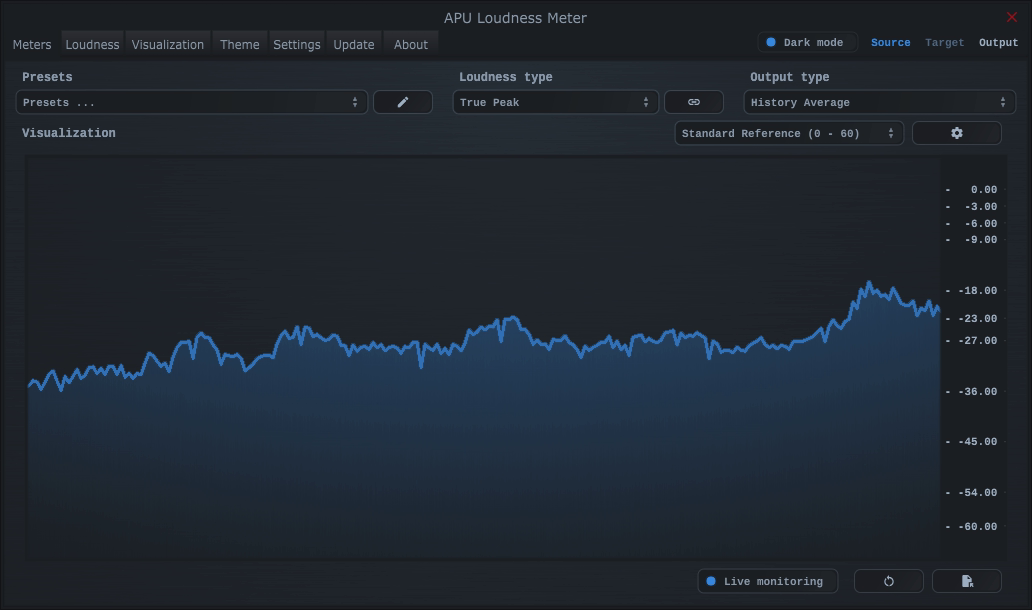APU Loudness Meter is a free loudness analysis plug-in supporting a variety of loudness types and metering modes with clean adjustable visuals. You can monitor in real-time using live history and histogram views, or analyze an entire file to view the overall statistics and histograms.
- Loudness types: LUFS (Momentary, Short-term, Integrated), RMS, Peak, and True Peak.
- Multi-channel: Supports stereo, surround, and Dolby Atmos® formats.
- Channel modes: Split or link channels for flexible metering.
- Visualizations: Live histogram and time-history views with configurable history lengths.
- Statistics: View min, peak, and average as well as LRA and Integrated LUFS.
System requirements: macOS 10.14 (x64, ARM), Windows 10 (x86, x64), OpenGL 3.2.
Supported software formats: Standalone application, VST, AU, AAX (Pro Tools 11+).








